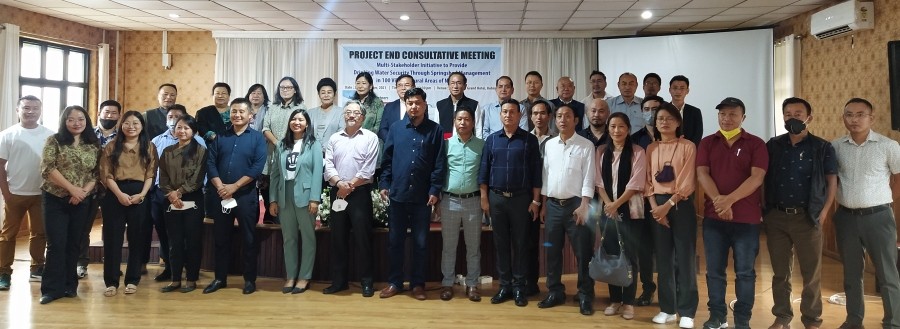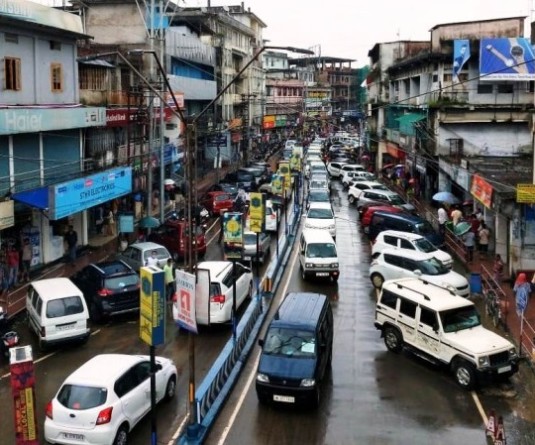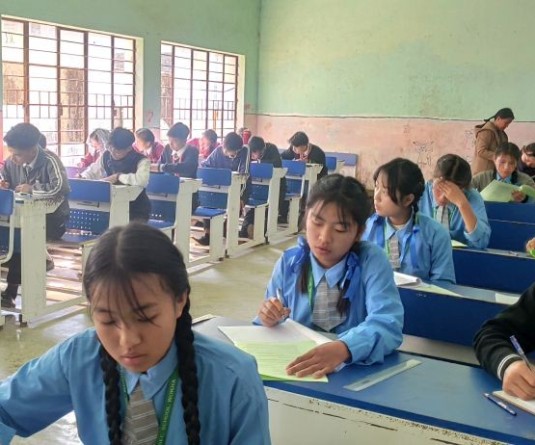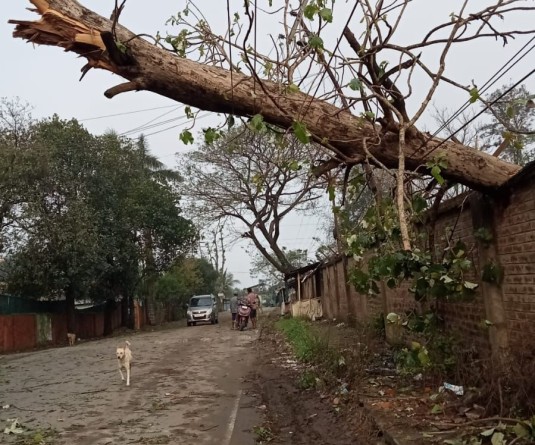Participants during the Project End Consultative Meeting held at De Oriental Grand Hotel, Kohima on September 29. (Morung Photo)

Total 96 villages completed project
Morung Express News
Kohima | September 29
With the major population of Nagaland state dependent on spring water, rivers and rivulets for their domestic and livelihood needs, 106 springs were rejuvenated under the “Multi-Stakeholder Initiative to provide Drinking Water Security through Springshed Management in 100 Rural Villages of Nagaland.” Out of the targeted 100 rural villages, 96 villages have completed the project while 4 villages could not complete due to various reasons.
This was highlighted during the Project End Consultative Meeting held at De Oriental Grand Hotel, Kohima on Wednesday involving stakeholders namely, North East Initiative Development Agency (NEIDA), Department of Land Resources, Department of Rural Development, People’s Science Institute (PSI) Dehradun and Advanced Centre for Water Resource Development & Management (ACWADAM), Pune.
In his opening remarks, Commissioner & Secretary, Department of Land Resources, Vikeyie Kenya IAS said that Nagaland state is also experiencing issues of global warming, climate change, environment degradation, air and water pollution and water scarcity along with the rest of the world. Citing a classic example of the change in the rainfall pattern as seen this ensuing monsoon, he noted that “we are blessed to receive a good amount of rainfall during monsoon, which lasts for almost 7 months, but experience acute shortage of water during dry season.
He pointed out that in view of steep terrain in most places in the state, it poses a problem for rain water harvesting and storage, both over-ground and underground as most rain water escapes as runoff. In addition to this, he said, “human activities/exploitation in the form of jhumming, rapid urbanization, road construction, firewood trading, logging, etc, have added problem for water conservation, leading to depletion of underground water resulting drying up of many natural springs.”
Recognising the need to restore and recharge springs through different approaches, he highlighted that the department first initiated development program in the state on a pilot basis targeting one village in each of the then 11 districts of the state during 2016-17 with technical support from PSI Dehradun and ACWADAM, Pune. The purpose, he said, “was to recharge the underground aquifers by using appropriate engineering/mechanical vegetative or social measures and rejuvenate springs while also ensuring water quality of the spring’s water through community led management of springsheds.”
Towards this end, he also informed that the Department now has well established infrastructure with state-of-the-art software and hardware support in planning and monitoring for watersheds and springshed management besides having a GIS cell and field laboratories and 33 Asstt Inspector (Ais) and water shed development team members (WDTs) and 13 officers trained as para-hydrogeologist through State Level Nodal Agency (SLNA) and by experts from PSI Dehradun and ACWADAM, Pune.
To further scale up springshed development in the state, he said, the department has partnered with the other stakeholders of the project and expressed confidence that they have achieved their goals through collective efforts. He also highlighted that the department has come up with the inventorization of the springs in all the settlement of the state which comes to 2,361 springs using modern equipments besides development of 11 customized automated weather stations (CAWS) in the state.
“With doable policy support at the national and state levels on springshed management in hilly region like ours, the springshed management hopefully would be able to ensure water security to the people of the state and turn vulnerable communities into ‘climate smart’ communities,” he added.
Commissioner & Secretary for Rural Development, Neposo Theluo, IAS also remarked that it is a very relevant project while putting across that spring water is the only source of drinking water for our people as it was in the olden days. Stressing on the importance of rejuvenating springs, he pointed out that this will also work towards achieving sustainable goals.
He further said that being able to complete the project in 96 villages with a 96% success rate is a ‘good achievement’ as they were also able to rejuvenate 106 springs covering most of the water-stressed blocks and villages, which have also started yielding benefits.
Overview of Project Activities and Outputs (2018-2021) was presented by Khrolhiweu Tsuhah, NEIDA during the consultative meeting. There was also sharing of experiences by district teams on lessons learnt, challenges and recommendations. “Way Forward: Plans for Springshed Rejuvenation of the Department & Recommendation for Future Partnership” was also presented by the Director of Land Resources, Renben Lotha, Director of Rural Development, Liboni Humtsoe and State Co-ordinator, NEIDA, Sentimongla Kechuchar.





